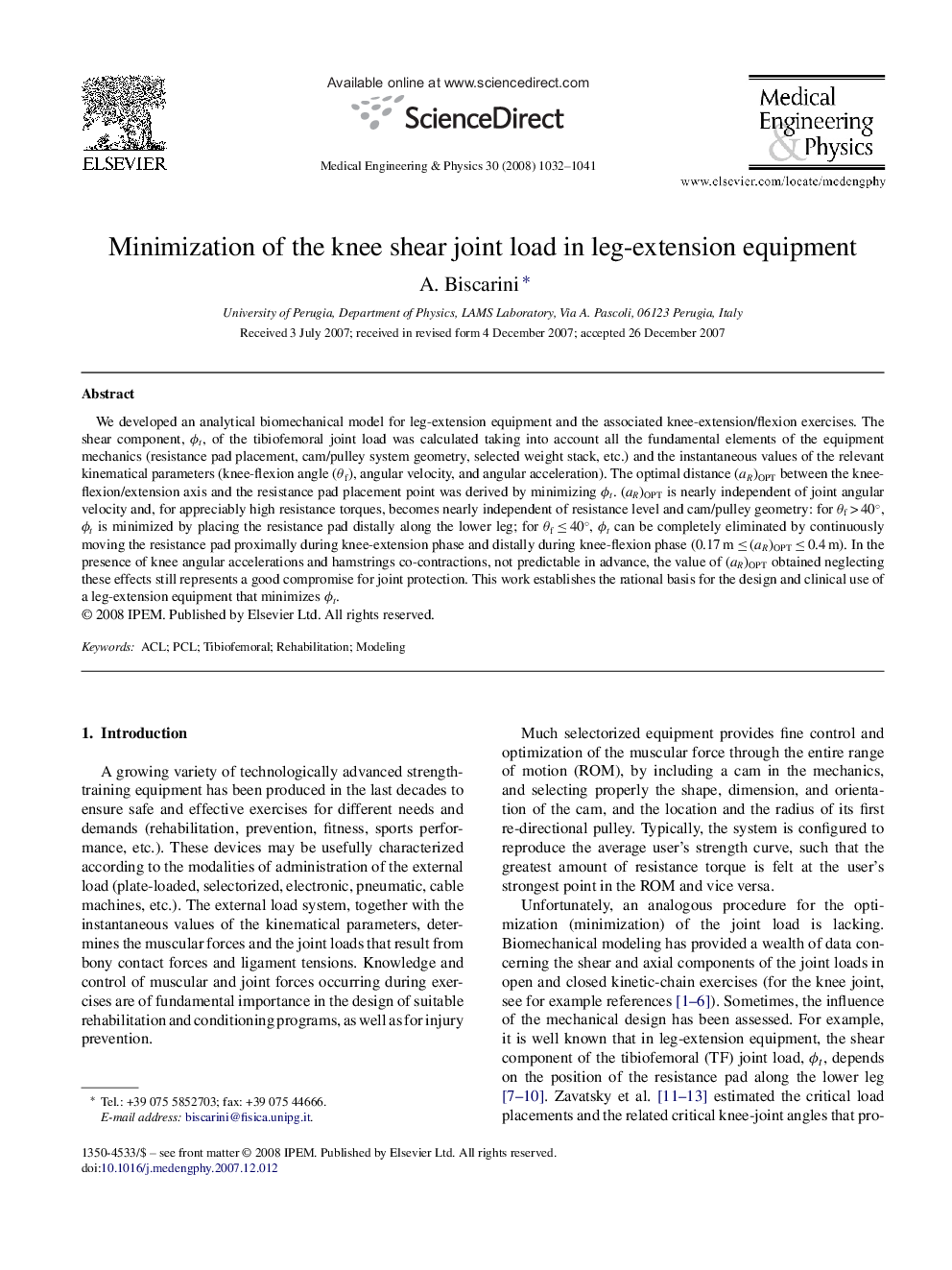| کد مقاله | کد نشریه | سال انتشار | مقاله انگلیسی | نسخه تمام متن |
|---|---|---|---|---|
| 877153 | 910890 | 2008 | 10 صفحه PDF | دانلود رایگان |

We developed an analytical biomechanical model for leg-extension equipment and the associated knee-extension/flexion exercises. The shear component, ϕt, of the tibiofemoral joint load was calculated taking into account all the fundamental elements of the equipment mechanics (resistance pad placement, cam/pulley system geometry, selected weight stack, etc.) and the instantaneous values of the relevant kinematical parameters (knee-flexion angle (θf), angular velocity, and angular acceleration). The optimal distance (aR)OPT between the knee-flexion/extension axis and the resistance pad placement point was derived by minimizing ϕt. (aR)OPT is nearly independent of joint angular velocity and, for appreciably high resistance torques, becomes nearly independent of resistance level and cam/pulley geometry: for θf > 40°, ϕt is minimized by placing the resistance pad distally along the lower leg; for θf ≤ 40°, ϕt can be completely eliminated by continuously moving the resistance pad proximally during knee-extension phase and distally during knee-flexion phase (0.17 m ≤ (aR)OPT ≤ 0.4 m). In the presence of knee angular accelerations and hamstrings co-contractions, not predictable in advance, the value of (aR)OPT obtained neglecting these effects still represents a good compromise for joint protection. This work establishes the rational basis for the design and clinical use of a leg-extension equipment that minimizes ϕt.
Journal: Medical Engineering & Physics - Volume 30, Issue 8, October 2008, Pages 1032–1041